 |
Entomology Hobby Page Digital Photos from My Garden and elsewhere Bees, Wasps & Hornets with a few bee-like flies, etc. |
 |
|
| ||
Bees, wasps and hornets come in a bewildering variety of
shapes, colors and sizes. Add to that the numerous flies that mimic or
imitate them in some manner. The one thing they all have in common is the
instinctive respect they get from you. Buzzzzzz, back off, bozo! I've been
stung just one time in the garden, when I was pruning a spreading juniper
that covers part of a large flowerbed. I learned that a species of small
bee had a ground nest under that thing. Ouch! A few weeks later one of my
granddaughters was skipping along on the large stones bordering that
flowerbed and she got it too. Ouch!, tears, hugs. She forgave me for not
warning her, but no more skipping in the garden for her! See the
hitchhiker? Read on. | ||
I count 20 species on this page, not including the Hitchhiker.
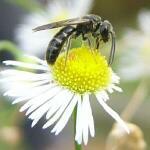 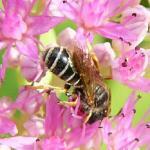 Black-and-white banded wasp and bee Black-and-white banded wasp and bee |
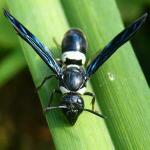 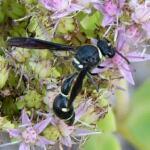 This is not the same species and this one This is not the same species and this one |
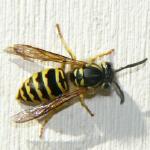 Flies imitate this Flies imitate this |
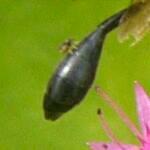 The Hitchhiker The Hitchhiker | ||
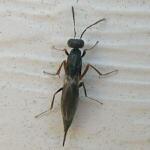 Beware
oviposters Beware
oviposters |
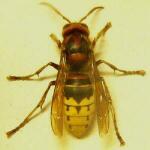 Giant Hornet
Giant Hornet |
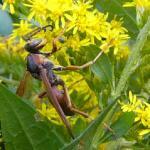 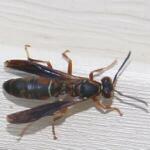 These wasps nest in my toolshed. We get along. These wasps nest in my toolshed. We get along. |
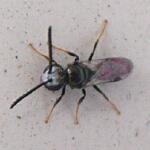 Yellow-footed Wasp Yellow-footed Wasp |
||
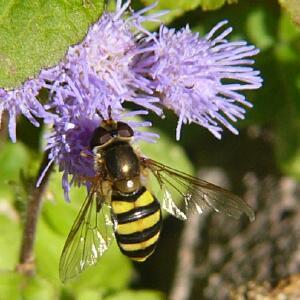 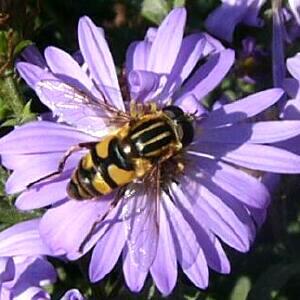 Many flies imitate bee and wasp coloration. But note two
wings and shape of eyes and antennae Many flies imitate bee and wasp coloration. But note two
wings and shape of eyes and antennae |
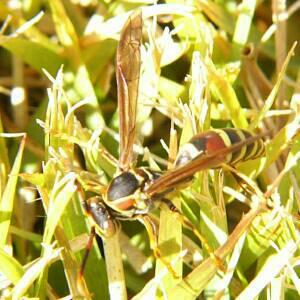 Reminds me of a semi with tandem trailers Reminds me of a semi with tandem trailers | ||||
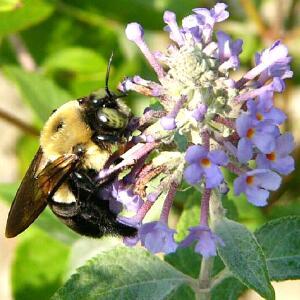 Note the huge eyes, abdominal hair Note the huge eyes, abdominal hair |
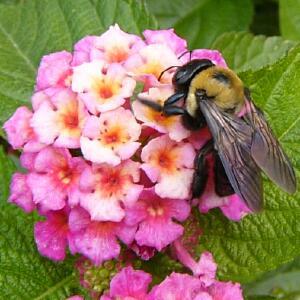 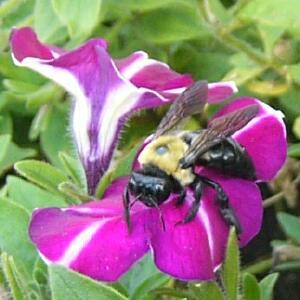 These two are a
larger, different species. Look at the smaller eyes, and hairless abdomen These two are a
larger, different species. Look at the smaller eyes, and hairless abdomen
| ||||
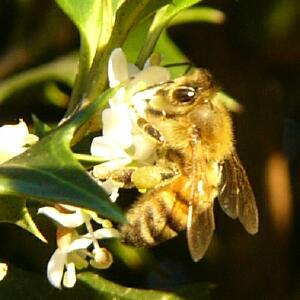 Fat city. Note the pollen basket on hind leg. Fat city. Note the pollen basket on hind leg. |
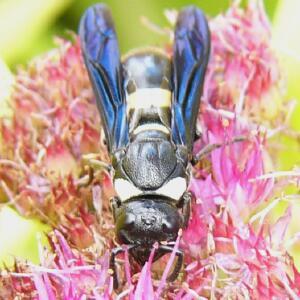 A Potter Wasp. They love the Sedum A Potter Wasp. They love the Sedum
|
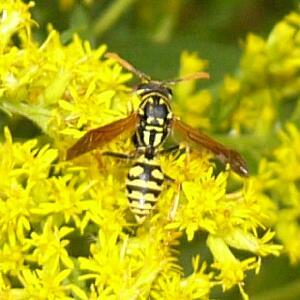 A
wasp that flies mimic. But gold antennae? A
wasp that flies mimic. But gold antennae? | |||
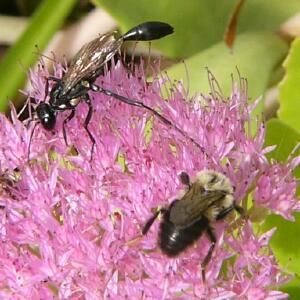 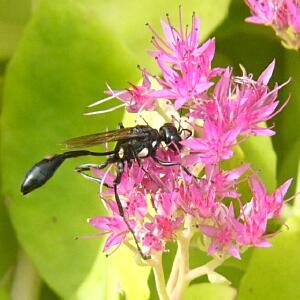
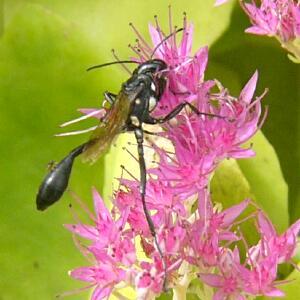 Nothing on the wasp's abdomen. Oops! a hitchhiker landed, flattened out.
Now it's up and walking. See enlargement at top of page. A parasitic wasp?
Nothing on the wasp's abdomen. Oops! a hitchhiker landed, flattened out.
Now it's up and walking. See enlargement at top of page. A parasitic wasp?
| |||||
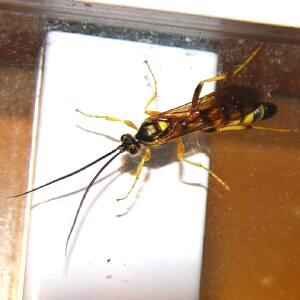 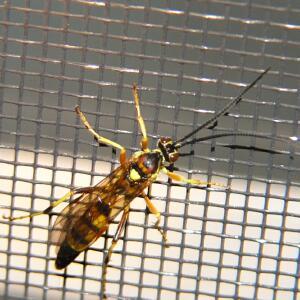 A little
excitement during nighttime moth photography sessions. I never know what
to expect. A little
excitement during nighttime moth photography sessions. I never know what
to expect. |
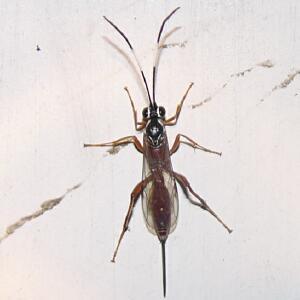 Color coordinated antennae and spectacles. Color coordinated antennae and spectacles. | ||||
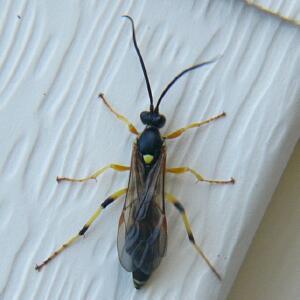 Legs and yellow spot look like species above.
Legs and yellow spot look like species above. |
In most cases I will not even try to determine specific
names for the critters on this page. I'd need several monographs, careful
measurements and a microscope to identify many of them. I'm happy just
noting the color and pattern differences so that I can say "this species
is not duplicated on this page." There are many Potter Wasps. That is more
of a generic name for a group of wasps than for an individual species.
Ditto for bumblebees, etc. |
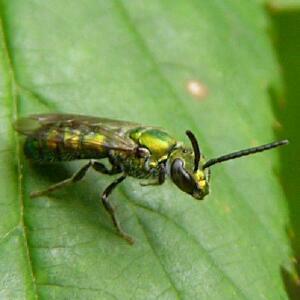 Geez, they even come in metallic colors. Weird. Geez, they even come in metallic colors. Weird.
| |||